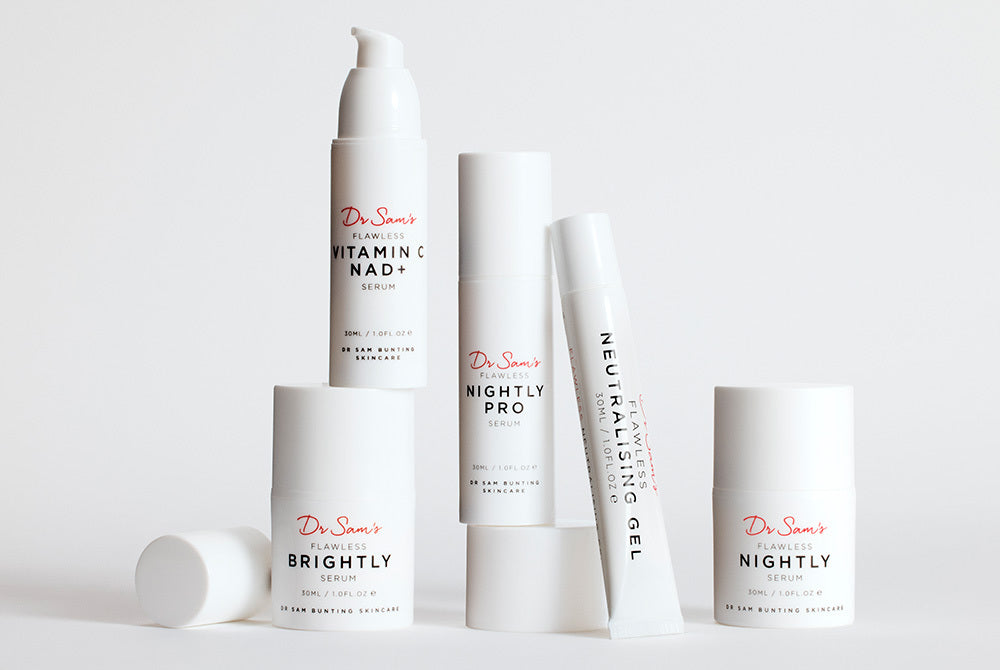Views: 1
We know Vitamin C is an integral part of a routine for healthy skin. But how do we get the most out of it? Here’s the low-down!
How do I use vitamin C in my routine?
The first thing to say is that vitamin C belongs in your morning routine. In part, this is because your retinoid is likely to be hogging the limelight in your nighttime routine. But mostly, it just makes sense because of its essential role in assisting with your skin’s defenses which are most needed during daylight, because of the huge role the sun’s rays play in challenging our skin.
Most vitamin C serums are best applied after cleansing and before the remainder of your routine, but this is mostly governed by how viscous (or not) your product is. Use common sense and apply from thin to thick.
Remember that all sun-exposed sites will benefit so do use it on your neck, backs of hands, and eyes if shin tolerates it elsewhere. These thin-skinned areas love the collagen support.

Who should use vitamin C?
Vitamin C is a hugely versatile ingredient and is beneficial to almost everyone who cares about the long-term health of their skin.
Who should not use vitamin C?
My one caveat is in those who are actively breaking out. If you are, put vitamin C to the side and focus on anti-acne anti-inflammatory ingredients like benzoyl peroxide and salicylic acid. We’ll get to vitamin C once your breakouts are controlled.
How do I use vitamin C with other ingredients?
Within the ‘anti aging’ toolkit, vitamin C works well with pretty much everything. Separate out your retinoid and vitamin C (this is logical anyway, as mentioned before) to minimise irritancy. Then feel free to partner your vitamin C with other synergistic actives that build collagen or work on pigmentation – just introduce cautiously and one element at a time if skin is sensitive.

What are the different types of vitamin C?
This is complex. Ultimately, all vitamin C products, including the ester derivatives, work by being converted into l-ascorbic acid in the skin (much like retinol and retinal get converted into the active molecule all trans retinoic acid). This is the biologically active molecule. The challenge is getting these ingredients into the skin, as our lipid-loving barrier loves to keep water-y things, like l-ascorbic acid out. It’s also very unstable, so hard to keep active in a bottle in your warm, steamy bathroom.
The tricks we use are to add different molecules, so-called vitamin c derivatives, to alter these properties and make them more stable and better at penetrating.
Another challenge we have with using L ascorbic acid is the fact that it’s only absorbed by the skin at an acidic pH of 3.5 – at high concentrations, this can be very irritating, especially to those of us with dry, sensitive or redness-prone skin. Choosing a vitamin c derivative can help, as these tend not to require this level of pH and are happy at a more skin-friendly pH of above 4.
The limitation? There is less data on these newer molecules than there is on l ascorbic acid, most of which was done by the Skinceuticals founder Sheldon Pinnell. But molecules with promise include THDA (good for brightening) and ascorbyl glucoside (good for antioxidant power, reducing excess melanin production and promoting collagen).

Why does vitamin C degrade?
Due to its antioxidant function, vitamin C very easily degrades in an oxygen-rich environment and it’s also unstable when it’s exposed to UV and water. Again, many of the derivatives have some advantage here. One vital aspect of vitamin C shopping is scrutiny of the packaging. It ideally should be airless and opaque for these reasons. If it’s anhydrous, meaning it’s formulated without water, this is less of an issue. Keep an eye out for any colour change and whether there’s any evidence of separation.
What about the price point?
There are a wide variety of factors that can affect the price point. Perhaps the most common variable is the concentration of vitamin C. A higher concentration does not necessarily translate into greater results and may well contribute to more irritation. Vitamin C concentrations between 10-20 per cent are usually optimum.

